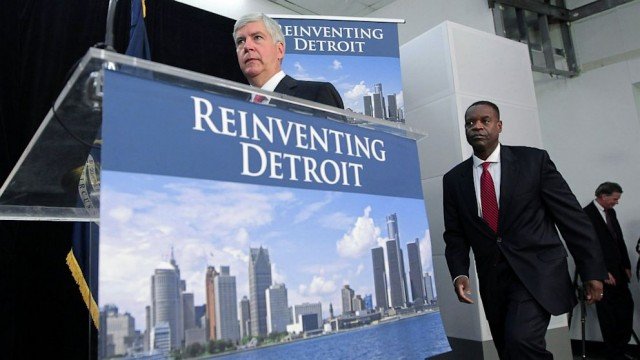Detroit’s state-appointed emergency manager Kevyn Orr has filed a plan to restructure the city’s debts in the wake of the largest municipal bankruptcy in US history.
The plan, awaiting approval from a bankruptcy judge, includes cuts to pensions and creditors to drive down the $18 billion debt.
Funds would also be devoted to demolishing abandoned city properties.
Detroit initially filed for bankruptcy protection in July 2013.
“We must move swiftly to emerge from bankruptcy so that the financial distress harming the city can end,” state-appointed manager Kevyn Orr said in a statement.
“We maintain that the plan provides the best path forward for all parties to resolve their respective issues and for Detroit to become once again a city in which people want to invest, live and work,” he added.

Specifics of the debt relief plan include:
- Creditors, including bond insurers, will receive an estimated 20% of their claims
- Police and firefighter retirees will receive at least 90% of their pensions, and cost of living allowances will be eliminated
- The Detroit Institute of Arts will keep its city-owned art collection, with assistance from foundations and private donors
- $1.5 billion will be allocated over 10 years to city infrastructure and technology upgrades
The plan is reportedly likely to face obstacles moving forward, including court appeals should it be approved in bankruptcy court.
An estimated $12 billion of Detroit’s $18 billion debt is said to be unsecured, with no taxes or other revenue streams to pay it down.
Ongoing negotiations with stakeholders are also reportedly expected to result in changes to the plan, Kevyn Orr told US media.
The city has seen a dramatic decline in economic activity and population, as the big carmakers – once the city’s main source of employment – shifted production to cheaper locations in the US and overseas.
Detroit is now home to about 700,000 residents, down from the peak of 1.8 million in 1950.
[youtube tvXo1ozfL-w 650]
